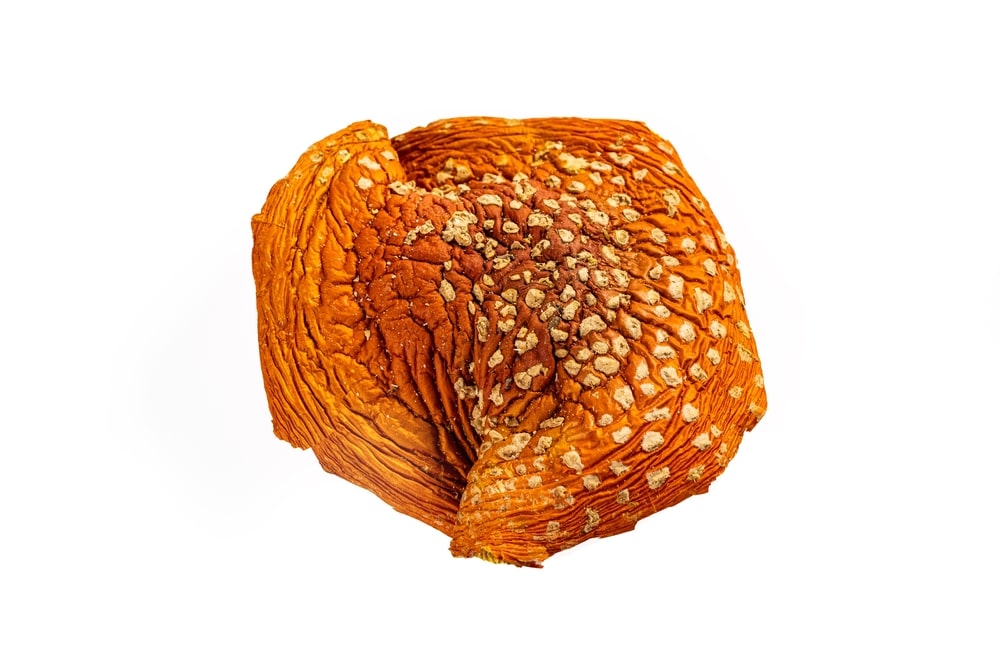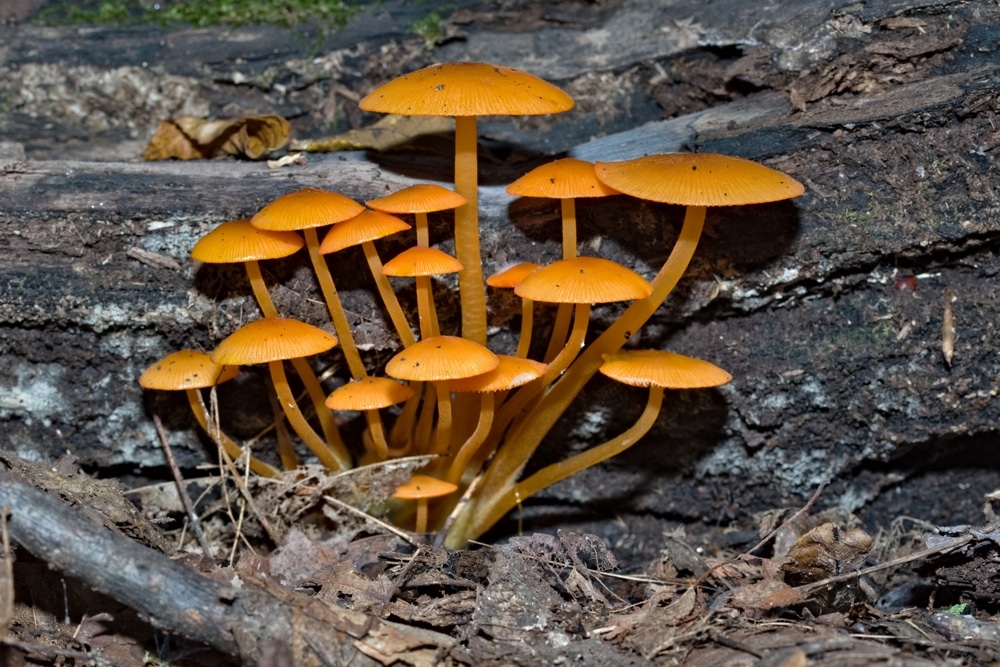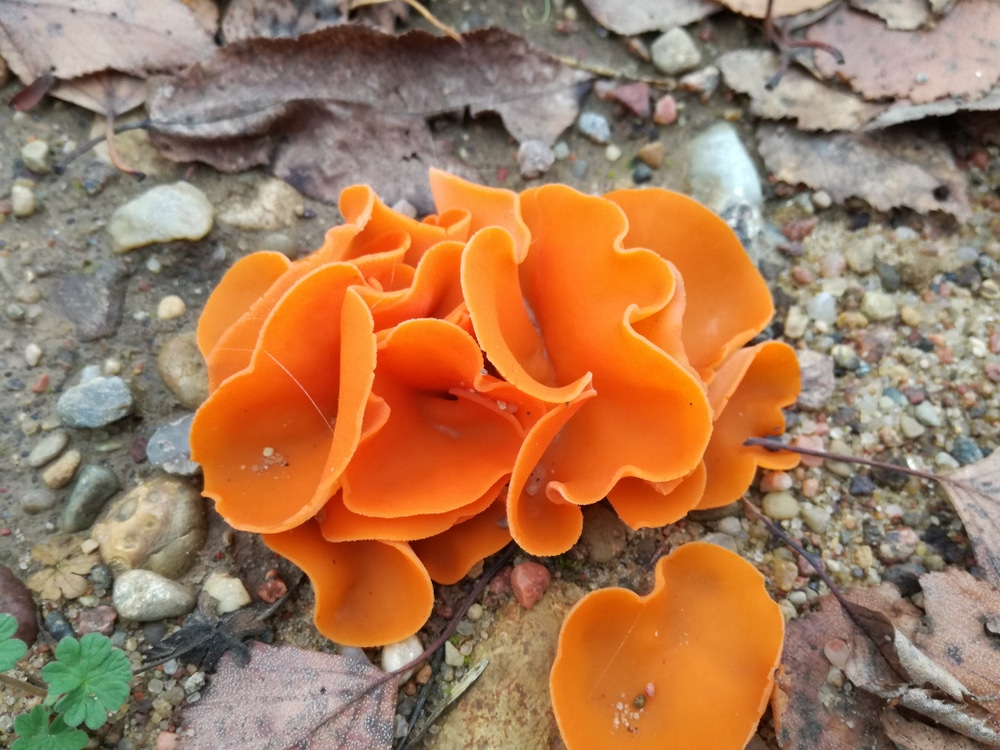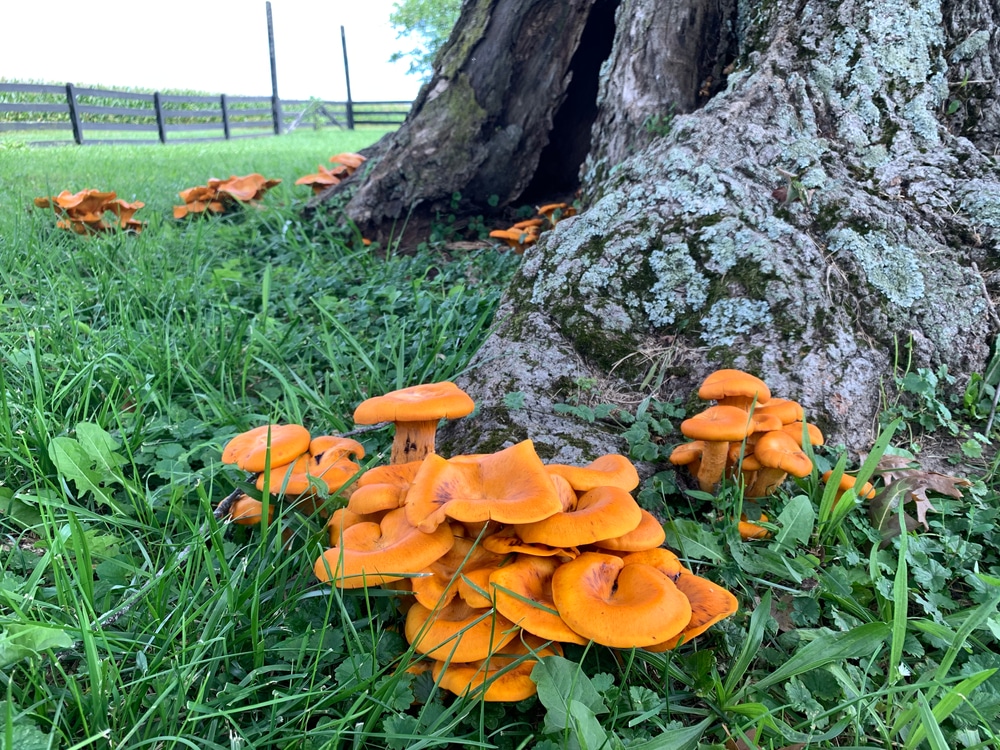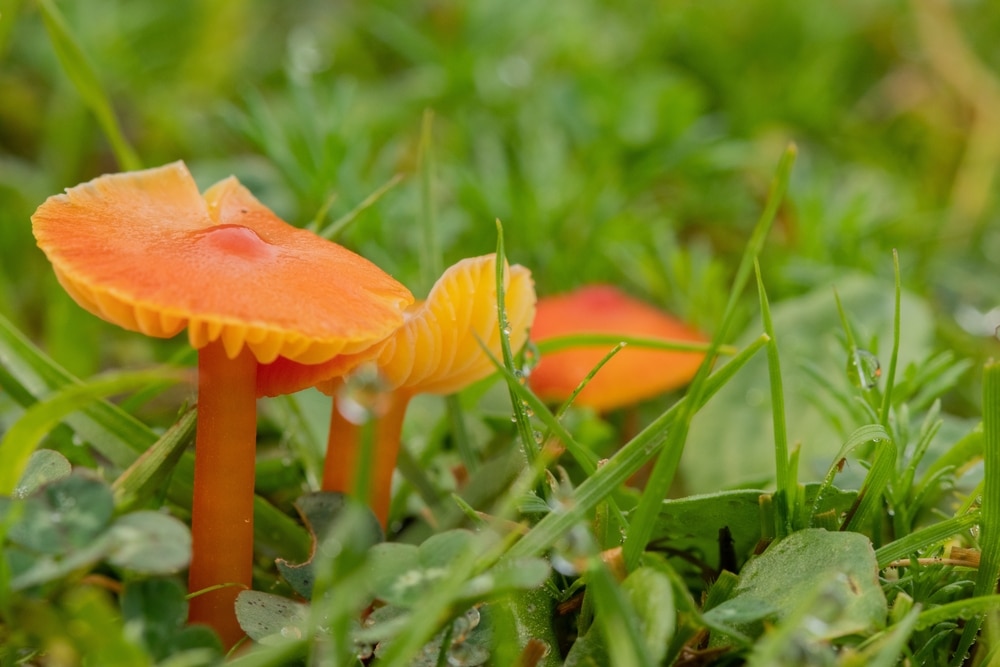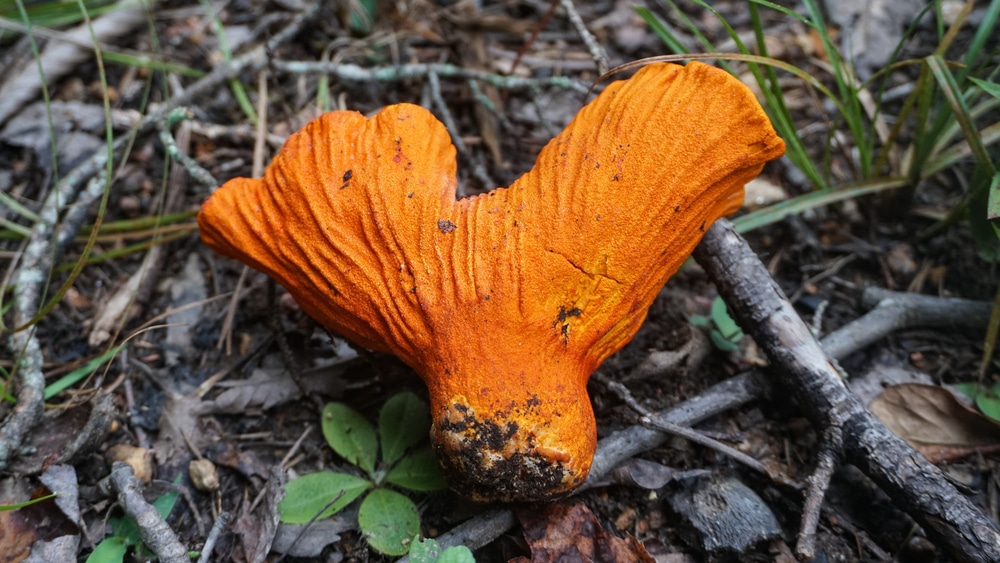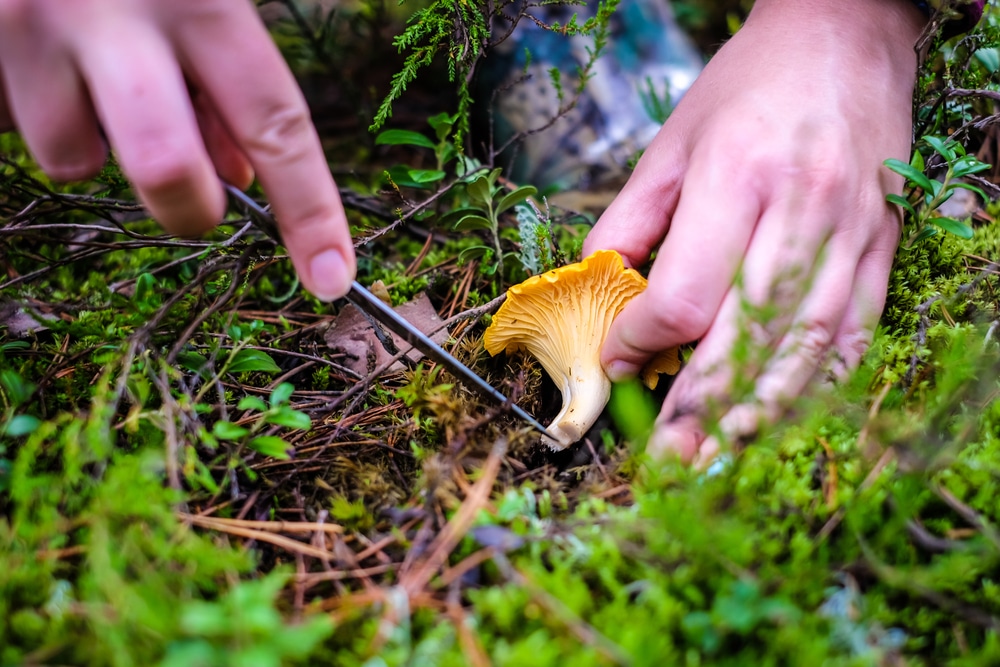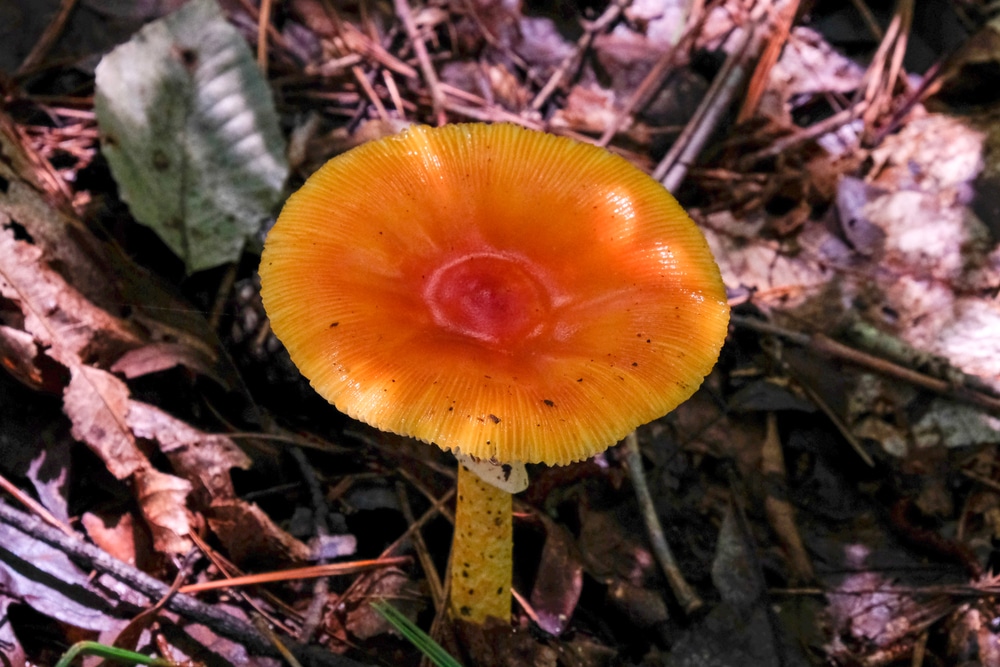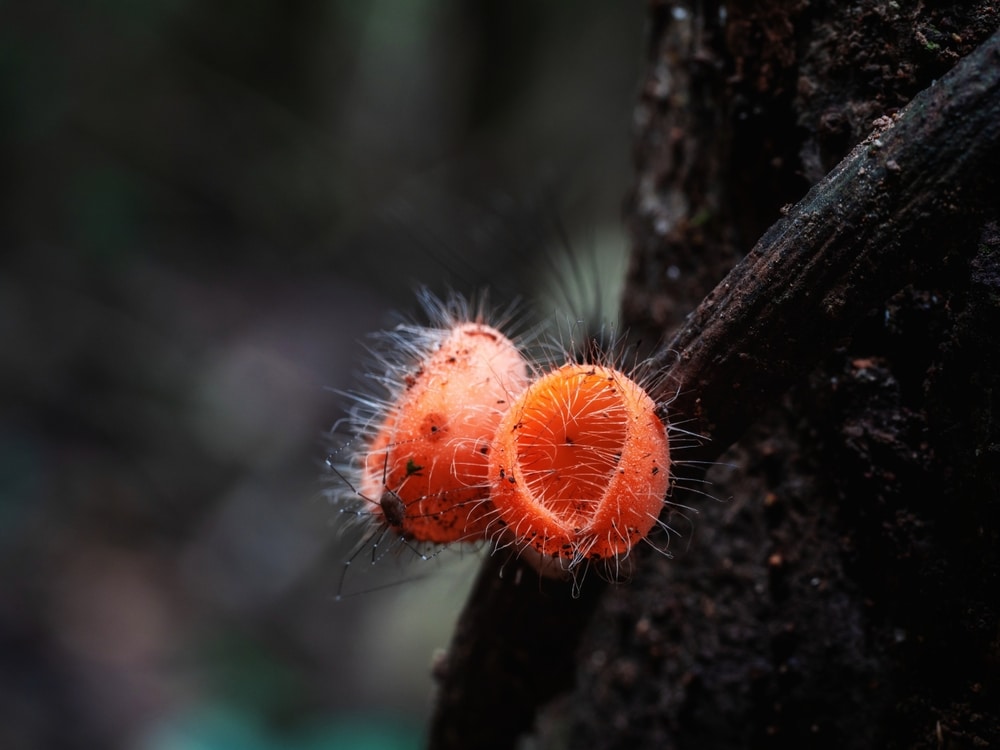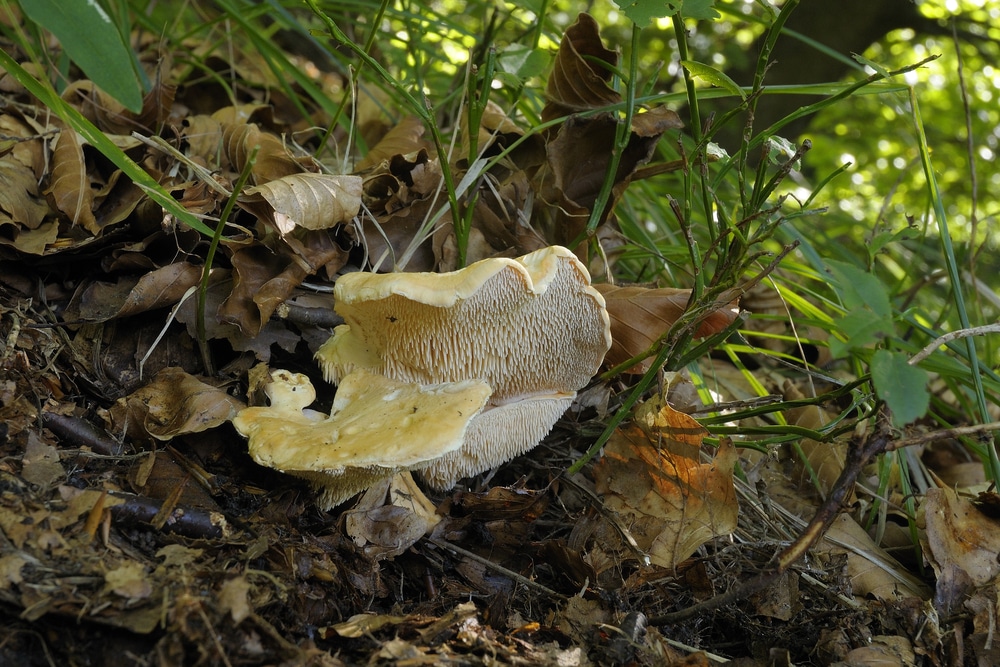When it comes to identifying mushrooms, one of the easiest ways is to look at their color. Orange mushrooms are so common that there are many varieties that get mixed up with each other when they aren’t identified properly. In this orange mushroom identification article, we’ll discuss several common types of orange mushrooms and go over their identifying features.
Orange Mushroom Identification
Many mushrooms, fungi, and toadstools are found growing in woodlands and fields across the state. If you plan to pick mushrooms, be very careful, as many species are toxic when consumed. Only eat a mushroom if you are 100% sure it’s edible.
Here’s a list of orange mushrooms:
- Orange Mycena (Mycena Leaiana)
- Orange Peel Fungus (Aleuria Aurantia)
- Jack-O-Lantern (Omphalotus Illudens)
- Goblet Waxcap (Hygrocybe Cantharellus)
- Lobster Mushroom (Hypomyces Lactifluorum)
- Woolly Chanterelle (Turbinellus Floccosus)
- Jackson’s Slender Amanita (Amanita Jacksonii)
- Eyelash Cup (Scutellinia Scutellata)
- The Orange Bonnet (Mycena Acicula)
- The Golden Trumpet (Xeromphalina Campanella)
- Hedgehog Fungus (Hydnum repandum)
Orange Mycena
The orange Mycena is a small mushroom species that grow in clusters. It’s native to North America, New Zealand, and Australia and is found growing in woodlands. This mushroom variety has a bright orange cap, and the surface of its skin is sticky. It’s unknown whether these mushrooms are toxic or not, but they don’t look very appetizing.
Orange peel fungus
The orange peel fungus has shell like growth and looks almost like coral. It grows on the surface of trees or in shaded areas. These mushrooms can get very large and often measure 4 inches across. They are edible when cooked.
Jack o’ lantern mushroom
Another toxic variety of mushroom is the jack o’ lantern mushroom. This variety has a very similar color to a pumpkin, which is how it gets its name.
The jack o’ lantern mushroom has a yellow or orange cap that turns downwards and has wavy gills underneath. The white stem that’s either bulbous or smooth, depending on the variety.
Goblet Waxcap
The goblet waxcap is a small bright orange mushroom with a long stem. It’s found growing in grasslands and woodlands across America, Europe, and Australia. These mushrooms also grow in decaying matter or on rotting wood.
Lobster Mushroom
The lobster mushroom is an interesting plant as it’s a parasite that grows on top of other mushrooms in coniferous forests. The color of this mushroom is very similar to that of a cooked lobster, which is how it gets its name.
Chanterelle mushroom
One of the most commonly misidentified orange mushrooms is the chanterelle mushroom. This variety has a funnel-shaped cap that’s typically bright yellow or orange in color, with wavy ridges along its margin.
It also has a crease in the center of its cap and gills that are white on the edges and orange or yellow near its base. Chanterelles grow under coniferous trees, usually throughout the summertime.
These mushrooms are commonly called Woolly chanterelle, Scaly chanterelle, Shaggy chanterelle, or Scaly vase and are toxic to humans and animals.
Jackson’s Slender Amanita
The Jacksons slender amanita is one of the most poisonous varieties of mushrooms in the world. It’s a unique mushroom that goes through many stages in its growth cycle. When the fungus first appears, it looks like a white egg on the ground. A small orange mushroom will then form, which is bright orange on top with a yellow stem.
Eyelash Cup
This mushroom gets its name due to the small hairs that grow around its circumference. It’s bright orange and grows close to the ground. These mushrooms are described as looking wet or even oily.
Hedgehog fungus
The hedgehog fungus is a light shade of orange and has a flat, spongy cap and a stem that grows in an askew fashion. It also has gills along its underside that are covered in little spines, giving it its nickname. This mushroom is also commonly called a sweet tooth.
Conclusion
This article is a great place to start if you’re looking for an orange mushroom identification guide. By understanding these common varieties of orange mushrooms and their identifying features, you can quickly identify mushrooms when out on a hike or camping trip.
You may also be interest in mushrooms growing in a potted plant.
